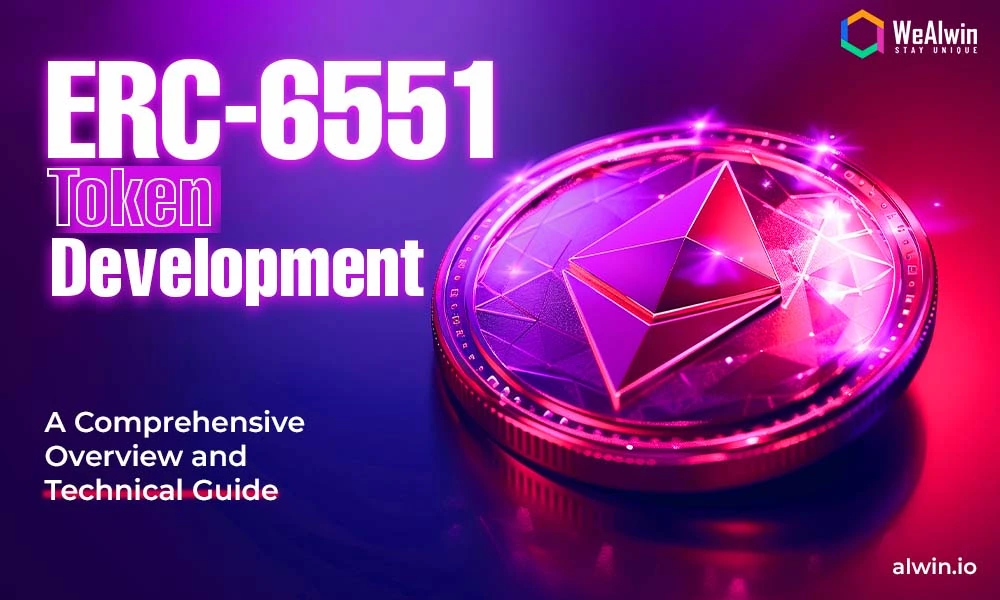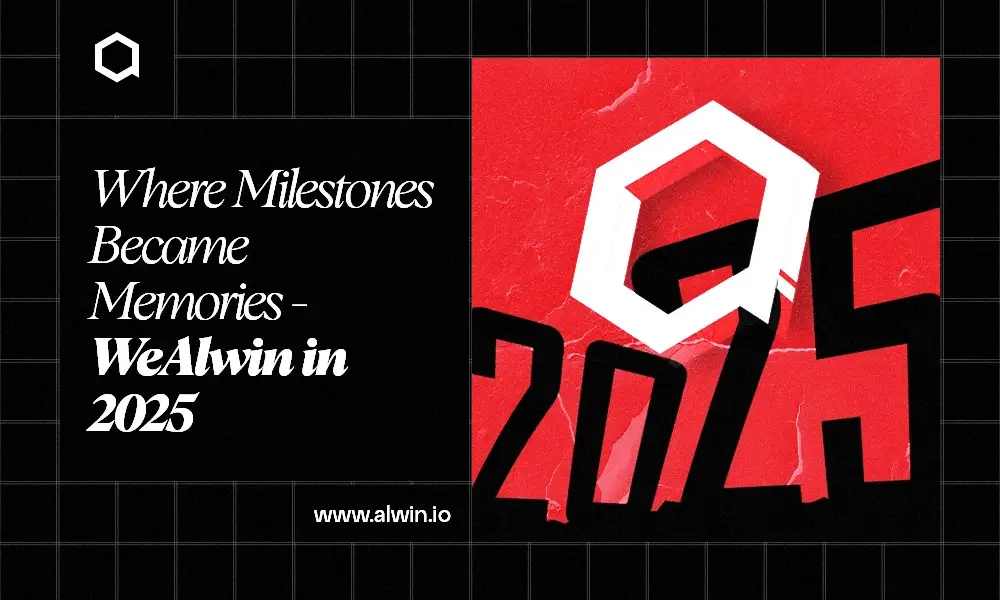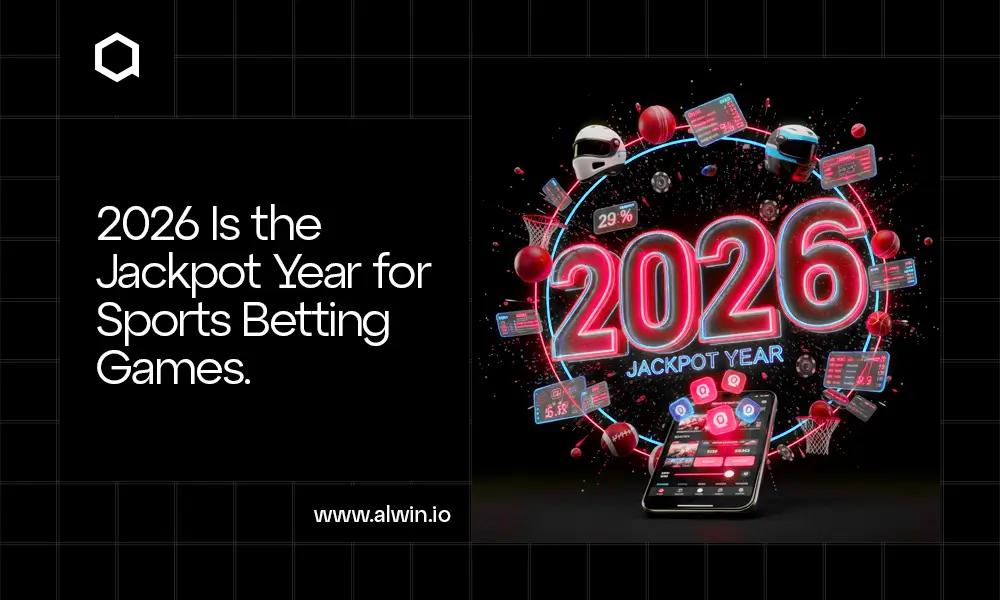Welcome to the transformative world of ERC6551 token development, where the possibilities for digital assets are expanding beyond imagination! Picture a future where your NFTs are not just static collectibles but dynamic, self-managing entities that can hold, trade, and interact with other digital assets.
ERC6551 introduces a revolutionary concept: token-bound accounts (TBAs), that empower NFTs to operate autonomously within decentralized ecosystems. Industries from gaming and real estate to finance and logistics can now leverage these benefits for more efficient and secure transactions.
Join us as we explore the remarkable capabilities of ERC6551 token development, uncover its applications, and envision a future where digital assets are powerful tools for engagement, investment, and creativity. Welcome to the next chapter in the evolution of digital assets!
ERC6551 Token Standard
ERC6551 introduces Token Bound Accounts (TBAs), which are smart contracts that possess their unique addresses and are directly linked to specific NFTs. These accounts function like mini-wallets, allowing the NFTs to hold assets, interact with decentralized applications, and manage transactions independently, enhancing the utility and functionality of NFTs within the blockchain ecosystem
Evolution of ERC6551 Implementation
ERC6551 was developed to address the limitations of earlier token standards like ERC20 and ERC721. While ERC-20 introduced fungible tokens and ERC721 enabled unique digital assets, ERC6551 builds on these by allowing tokens to own other tokens and interact in sophisticated ways. This evolution reflects the blockchain ecosystem's growing maturity and the need for more advanced digital asset management.
What is ERC6551 Token Development
ERC6551 token development is a process that enables non-fungible tokens (NFTs) to function as token-bound accounts (TBAs), allowing each NFT to act as its smart contract wallet. This innovative standard, built on the existing ERC721 framework, empowers NFTs to hold and manage other digital assets, interact with decentralized applications (DApps), and perform complex transactions autonomously.
Key Differences Between ERC6551 and Other ERC Standards
To understand the significance of ERC6551, it's essential to compare it with other popular Ethereum token standards: ERC20 and ERC721.
|
Feature
|
ERC-20
|
ERC-721
|
ERC-6551
|
|
Token Type
|
Fungible
|
Non-Fungible
|
Non-Fungible
|
|
Use Case
|
Cryptocurrencies, Utility Tokens
|
Unique Digital Assets (NFTs)
|
Advanced NFTs, Token-Bound Accounts
|
|
Token Ownership
|
Single Owner for Each Token
|
Single Owner for Each Token
|
Tokens Can Own Other Tokens and Assets
|
|
Interoperability
|
Limited, Primarily within ERC-20 Ecosystem
|
Limited, Primarily within NFT Ecosystem
|
Enhanced, Seamless Interaction with Other Tokens and Contracts
|
|
Customization
|
Basic Token Properties
|
Limited Customization
|
Advanced Customization Options
|
|
Security Features
|
Standard Ethereum Security
|
Standard Ethereum Security
|
Enhanced Security Measures
|
|
Asset Management
|
Basic, Suitable for Fungible Tokens
|
Basic, Suitable for Unique Assets
|
Advanced, Suitable for Complex Asset Management
|
|
Transaction Processing
|
Simple Transactions
|
Ownership Transfers, Metadata Updates
|
Complex Transactions Involving Multiple Assets
|
|
Scalability
|
High, Suitable for Large Volumes of Tokens
|
Moderate, Limited by NFT Use Cases
|
High, Designed for Scalable Solutions
|
|
Smart Contract Integration
|
Basic Interactions
|
Limited Interactions
|
Extensive, Supports Complex Smart Contracts
|
Unique Features and Advantages of ERC6551 Protocol
Token-Bound Accounts (TBAs): ERC6551 tokens can function as accounts, allowing them to hold other tokens and assets. This capability facilitates complex asset management and interactions, enabling NFTs to act like smart contract wallets.
Enhanced Interoperability: Designed for seamless integration, ERC6551 works well with other tokens and smart contracts. This interoperability fosters the development of more versatile and interconnected applications across the Ethereum ecosystem.
Advanced Customization: Developers have the flexibility to customize ERC6551 tokens for specific use cases. This level of customization surpasses the capabilities of traditional ERC20 and ERC721 tokens, enabling tailored functionalities.
Improved Security: The ERC6551 standard incorporates advanced security features that protect assets and ensure secure transactions. By utilizing TBAs, each token benefits from the security protocols of Ethereum accounts.
Scalability: ERC6551 supports scalable solutions, making it suitable for large-scale applications. Its architecture efficiently manages numerous tokens and transactions, accommodating the growing demands of decentralized applications.
Technical Architecture of ERC6551 Token Development

Token-Bound Registry in ERC6551 Protocol:
The Token-Bound Registry is the entry point for NFT projects deploying token-bound accounts (TBAs). It maps NFT IDs to their corresponding TBA addresses, facilitating the management and interaction of NFTs as independent wallets.
Minimal Proxy Contracts:
ERC6551 utilizes minimal proxy contracts to create efficient and lightweight implementations of TBAs. This approach reduces gas costs and simplifies deployment, allowing multiple TBAs to share the same logic while maintaining unique functionalities.
Account Interface:
The Account Interface defines the interactions and functionalities that TBAs can perform. It allows ERC6551 tokens to hold assets, execute transactions, and interact with decentralized applications (DApps) while functioning as on-chain identities.
EVM Compatibility:
ERC6551 is fully compatible with the Ethereum Virtual Machine (EVM), enabling TBAs to operate seamlessly across various EVM-compatible blockchains, such as Polygon and Optimism. This compatibility broadens the potential use cases and integrations for ERC6551 tokens.
Upgradeability:
The architecture of ERC6551 supports upgradeability through its proxy system. This feature allows developers to introduce new functionalities and optimizations without disrupting existing TBAs, ensuring that the protocol can evolve while maintaining backward compatibility with ERC721 tokens.
Process of ERC6551 Token Operations
1. Account Creation in ERC6551 Standard:
Create an ERC721 NFT Contract: Developers start by creating an ERC721 NFT contract, which defines the NFTs with unique IDs.
Deploy the Registry Contract: The next step is to deploy the ERC6551 registry contract, which is responsible for managing the token-bound accounts (TBAs) associated with the NFTs.
Create a Token-Bound Account (TBA): The registry contract is used to create a TBA for each NFT. This TBA acts as a smart contract wallet for the NFT.
Initialize the TBA: The TBA is initialized with the necessary data, such as the NFT ID and the TBA address.
2. Authorization and Access:
Define Access Control: The TBA is designed to have access control mechanisms, ensuring that only authorized parties can interact with the NFT.
Set Permissions: Permissions are set for the TBA, allowing it to perform specific actions, such as transferring ownership or interacting with other smart contracts.
3. Perform Transactions:
Transfer Ownership: The TBA can transfer ownership of the NFT to another address.
Interact with Other Contracts: The TBA can interact with other smart contracts, enabling complex transactions and interactions.
Getting Started with ERC6551 Token Development
Initial Steps and Resources for ERC6551 Token Development
Understand the Basics: Familiarize yourself with the ERC6551 standard, which extends the ERC721 standard by allowing NFTs to function as token-bound accounts (TBAs) that can hold and manage other tokens.
Set Up Development Environment: Prepare your development environment by installing necessary tools like Node.js, Truffle, or Hardhat, which are essential for smart contract development.
Learn Solidity: Gain proficiency in Solidity, the programming language used for writing smart contracts on the Ethereum blockchain.
Explore Documentation: Review the official Ethereum documentation and resources related to ERC6551 to understand its functionalities and implementation details.
Tools and Platforms for ERC6551 Implementation
Development Frameworks: Use frameworks like Truffle or Hardhat for building, testing, and deploying smart contracts.
Ethereum Test Networks: Utilize test networks like Rinkeby or Goerli to deploy and test your ERC6551 tokens without incurring gas fees.
Smart Contract Auditing Tools: Leverage tools like MythX or Slither for security audits to identify vulnerabilities in your smart contracts before deployment.
Token Standards Libraries: Use libraries like OpenZeppelin, which provide pre-built contracts and utilities for implementing ERC standards securely.
Use Cases of ERC6551 Token Development
1. Gaming Applications
ERC6551 tokens enable in-game characters (NFTs) to act as token-bound accounts (TBAs), allowing them to own other NFTs, customize appearances, and interact with gaming ecosystems for dynamic gameplay.
2. Real Estate
ERC-6551 tokens can represent property ownership as NFTs, facilitating fractional ownership and transparent transactions by holding related documents and assets within TBAs.
3. Financial Institutions
Financial institutions can leverage ERC6551 tokens to create secure, on-chain identities for clients, enabling automated lending, borrowing, and asset tracking.
4. NFTs
ERC6551 enhances NFTs by allowing them to manage and own other digital assets, creating complex ecosystems for trading, upgrading, and utilizing assets.
5. Crowdfunding
Crowdfunding platforms can use ERC6551 tokens to represent investor shares as NFTs, providing transparency and ease of ownership transfer in campaigns.
6. Logistics
In logistics, ERC6551 tokens can track shipments and ownership of goods, with each item represented as an NFT that holds relevant data for real-time tracking.
7. Art
Artists can utilize ERC6551 tokens to create dynamic art NFTs that can evolve, managing multiple artworks or editions within a single token. This version succinctly captures the key use cases of ERC6551 tokens across various industries. Let me know if you need any further modifications!
Example Scenario: DeFi Lending with ERC6551 Tokens
Scenario Overview: In a decentralized finance (DeFi) platform, users can lend their NFTs as collateral for loans. With ERC6551, NFTs can act as token-bound accounts (TBAs), enabling them to hold and manage collateral seamlessly.
Process:
NFT as Collateral: A user owns a unique NFT (e.g., digital art) represented as an ERC721 token linked to a TBA. This TBA allows the NFT to function as a wallet.
Accessing the DeFi Platform: The user connects their TBA to a DeFi lending platform that accepts NFTs as collateral. The TBA facilitates interactions with the platform’s smart contracts.
Loan Application: The user requests a loan by specifying the amount and duration. The TBA automatically verifies the ownership of the NFT and its value.
Collateral Locking: Upon loan approval, the NFT is locked in the TBA, which communicates with the lending smart contract to secure the collateral. The NFT remains under the user’s control, as it is still linked to their TBA.
Receiving Funds: The smart contract disburses the loan amount to the user’s wallet. The user can now use these funds while the NFT remains locked as collateral.
Repaying the Loan: At the end of the loan term, the user repays the loan amount plus interest. The TBA interacts with the smart contract to unlock the NFT once the repayment is confirmed.
NFT Retrieval: After successful repayment, the NFT is released back to the user’s TBA, allowing them to manage or trade it as they wish.
Future Prospects and Trends in ERC6551 Token Development
The future of ERC6551 token development looks promising, with emerging trends indicating increased adoption and enhanced functionalities across various industries.
Increased Adoption Across Industries: As ERC6551 tokens provide enhanced functionalities, their adoption is expected to grow in various sectors, including gaming, real estate, finance, and logistics. This versatility allows NFTs to serve as digital assets that can own, manage, and interact with other tokens.
Enhanced Interactivity: The ability of ERC6551 tokens to act as self-contained wallets will lead to more interactive applications. Users can expect features like automated trading, lending, and borrowing, making NFTs more dynamic and functional.
Integration with DeFi and DApps: The integration of ERC6551 tokens with decentralized finance (DeFi) platforms and decentralized applications (DApps) will facilitate new financial products and services, enhancing user engagement and utility.
Conclusion
ERC6551 standard is set to revolutionize the NFT landscape by transforming how we interact with digital assets. By enabling NFTs to function as token-bound accounts (TBAs), this standard opens up exciting possibilities—where NFTs can autonomously manage other assets, engage in complex transactions, and seamlessly interact with decentralized applications.
The future of ERC6551 is not just about technology; it’s about creating new opportunities and experiences in the digital economy. We stand on the brink of a transformative era in digital asset management.
Ready to explore the potential of ERC6551 token development? Contact WeAlwin Technologies as an Ethereum Token Development Company to discover how we can help you harness this innovative standard and elevate your digital asset strategy!



